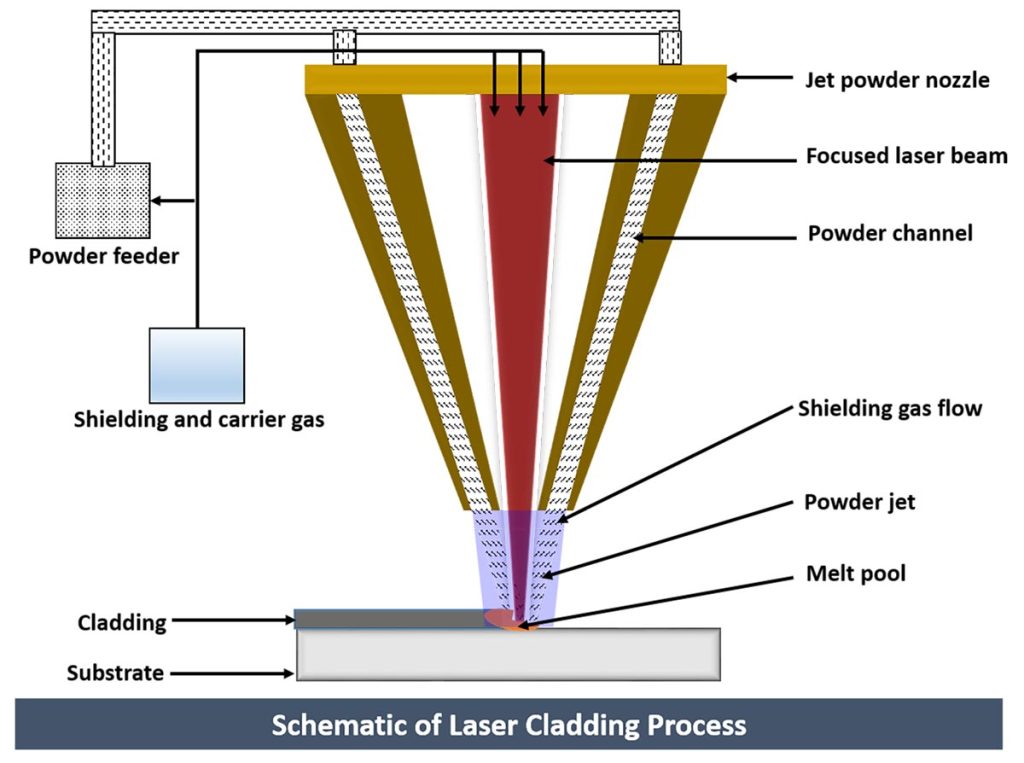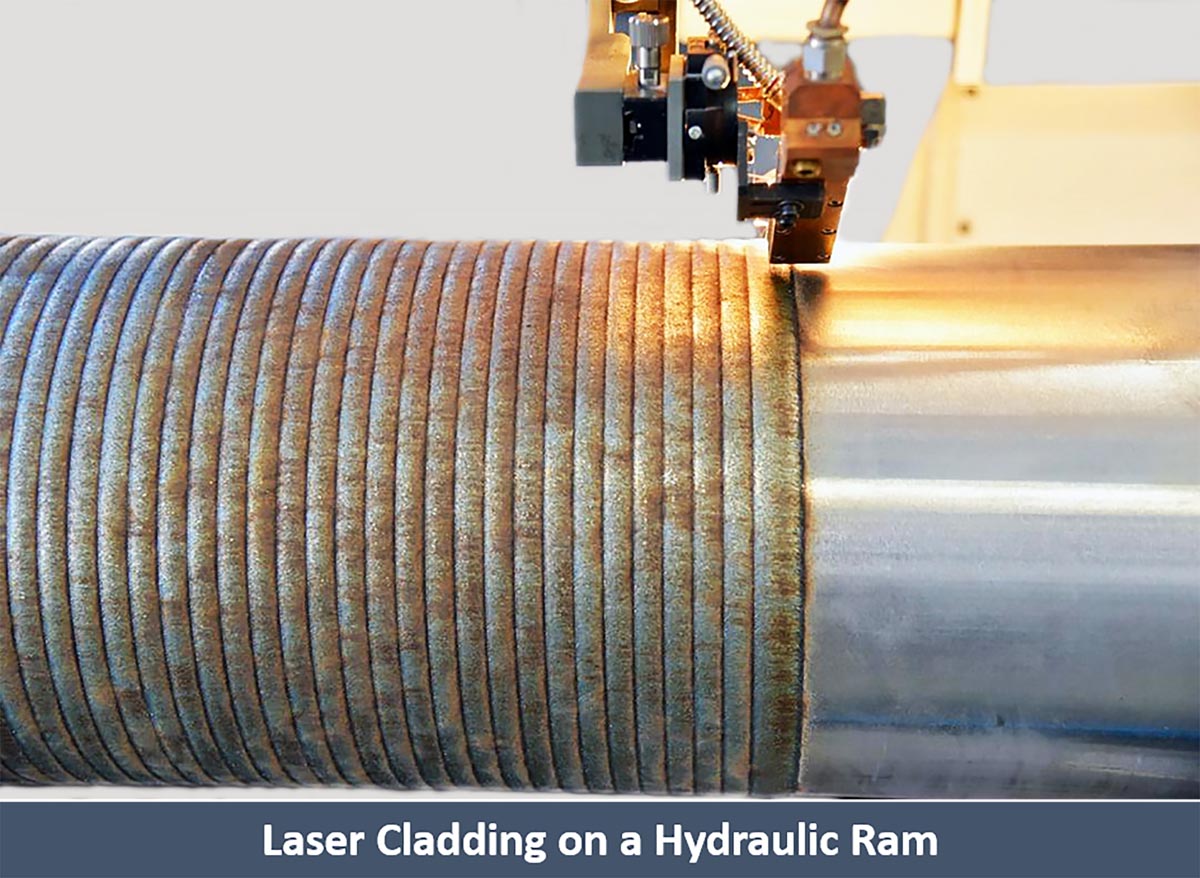Laser cladding is a process which utilizes the laser energy for melting and welding the powder material on the substrate. Since laser cladding operates at much lower temperature, it leads to a smaller heat affected zone. Laser cladding is ideal for the components which are prone to thermal distortion. The minimal distortion or no distortion with optimum laser cladding processing condition will retain the components original dimensions.

Laser cladding classified into powder bed fusion (PBF) and direct energy deposition (DED).
The PBF also recognized as Selective Laser Melting (SLM), is one of the promising techniques in additive manufacturing and restoring/repairing metallic components. In the SLM process, a fine layer of metal powder is spread on a solid substrate materials followed by a levelling to form a powder bed. The laser beam selectively melts the fine layer of powders on the bed and fuses to the substrate.
The DED also well known as Laser Metal Deposition (LMD)/Laser Engineered Net Shaping (LENS), is one of the most important techniques used for manufacturing and repairing Intricate shaped components. Simultaneous intersection of a focused laser beam and the injected feedstock (wire/powder) materials through the nozzle in the presence of an inert shield gas forms highly dense cladding in the LMD/LENS techniques.
Why Laser Cladding:
- Low dilution and high purity cladding can be achieved due to highly concentrated and focused laser beam on a small area
- Single pass cladding is sufficient to achieve a desired chemistry, microstructure and hardness due to low dilution
- Highly concentrated and focused laser beam leads to low heat affected zone which retains the substrate microstructure and mechanical properties after cladding process
- Minimal risk of dimensional deviation or distortion after cladding makes this process promising to achieve finish dimensions of the components with the close tolerance
- Unlike other thermal spray processes, a complete metallurgical bonding between substrate and laser clad layer improves the bond strength, abrasion resistance and withstands high direct impact load
- It is unlikely to tearing off, fracture and spalling of laser clad layer by any external physical load or stress due the complete metallurgical bonding
- Laser cladding are free from any cracks/porosity which prevents the penetration of highly reactive corrosive liquids/gases and protect the substrate materials from any catastrophic failure
- As-mixed elemental powders (rather than pre-alloyed) can be used in laser cladding to achieve desired chemical composition of any desired alloys (in-situ alloying)
Our high power long horizontal and high vertical cladding machines with direct energy deposition (DED) method are capable of repairing many challenging and critical jobs using robotic arms.
Laser Cladding can be performed on the following components (but not limited to)
- Mining equipment which requires extremely high-wear resistance
- Mineral processing equipment which is used in highly corrosive and erosive-corrosive environments
- Engine
- Transmission
- Brake / Driveline
- Oil & Gas
- Pumping
- Valves and valve seats
- Coal and ore crushing equipment
- Bearing and Seal Journals OD & ID
- Intricate components repair
- Cast Iron cladding and repair
Please contact us to improve the performance of your components and reduce downtime using our laser cladding facility.

